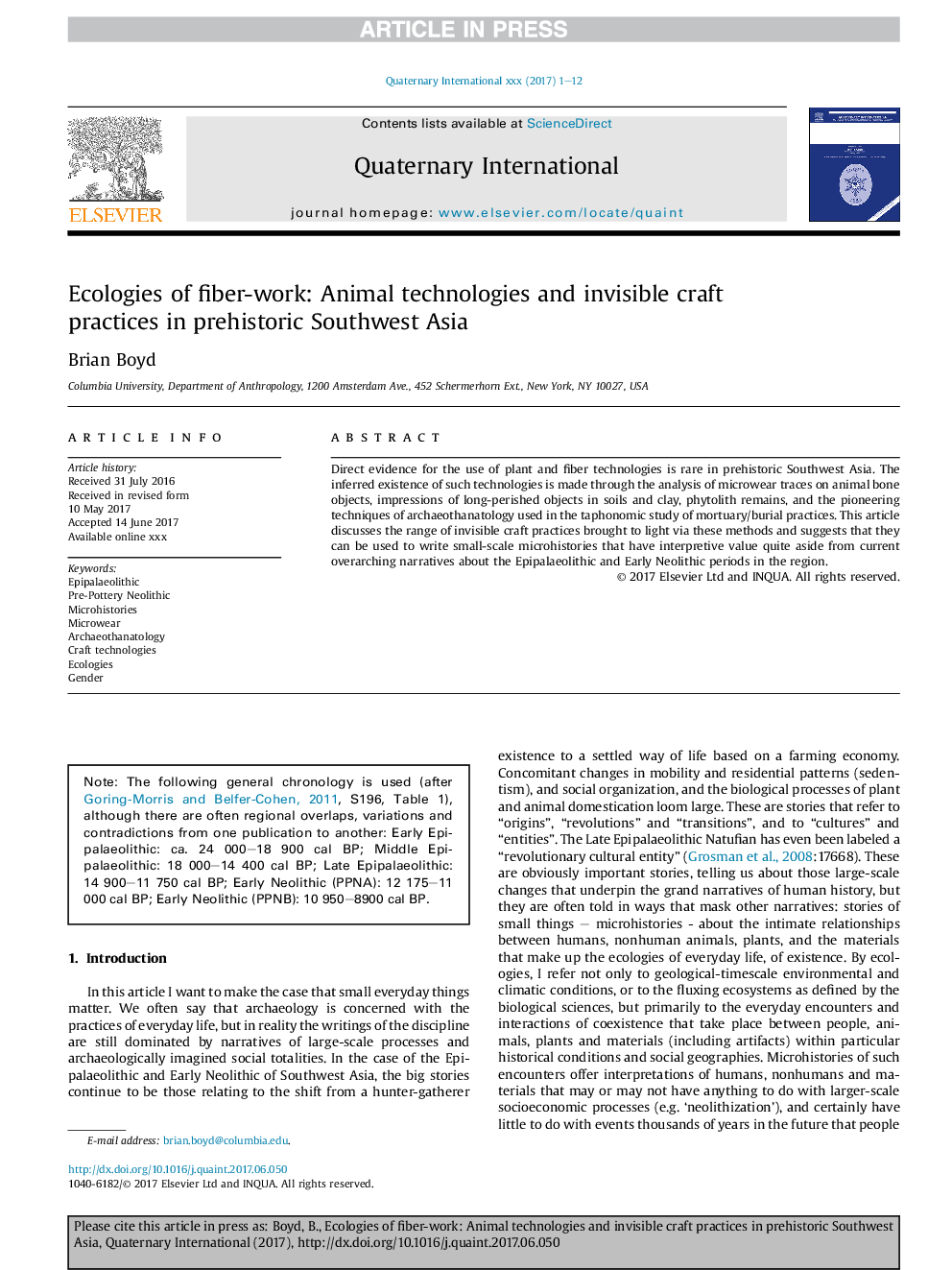| Article ID | Journal | Published Year | Pages | File Type |
|---|---|---|---|---|
| 7450358 | Quaternary International | 2018 | 12 Pages |
Abstract
Direct evidence for the use of plant and fiber technologies is rare in prehistoric Southwest Asia. The inferred existence of such technologies is made through the analysis of microwear traces on animal bone objects, impressions of long-perished objects in soils and clay, phytolith remains, and the pioneering techniques of archaeothanatology used in the taphonomic study of mortuary/burial practices. This article discusses the range of invisible craft practices brought to light via these methods and suggests that they can be used to write small-scale microhistories that have interpretive value quite aside from current overarching narratives about the Epipalaeolithic and Early Neolithic periods in the region.
Related Topics
Physical Sciences and Engineering
Earth and Planetary Sciences
Geology
Authors
Brian Boyd,
